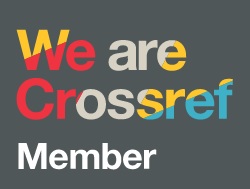Innovation and Adaptation
Guest Editorial
DOI:
https://doi.org/10.47895/amp.v56i20.7090Abstract
Innovation has been the cornerstone for advances in any field of endeavor throughout the history of man and has driven the relentless forward journey of the human race. This special Orthopedics issue highlights a number of articles that showcase innovations – ideas, devices, and systems.
The article by Aljibe, et al. showcases a novel method of producing patient-specific templates. While it is still in its infancy, the in vitro model is a first step towards a goal of translating this technology into surgical applications. This is an example of innovation driving medicine forward. 3-D printing has evolved from a hobbyist’s dream to an important tool in prosthetics, industry, drug delivery, and medicine.1-3 It is certainly exciting that scientists, engineers, and medical practitioners in our country are beginning to engage in this trailblazing field.
The article by Gavino, et al. combines two highly specialized procedures – brachial plexus reconstruction and markerless motion analysis, the latter an innovation in itself, and creates a novel method of evaluating results of surgical procedures.4,5 Treatment of brachial plexus injuries, which bring catastrophic damage to the nerve supply to the upper extremity, need accurate evaluation of their outcomes. Only by knowing what is achieved by current treatments can we hope to better the plight of these patients.
Genuino, et al. present a paradigm shift in delivery of services in a tertiary hospital whose main client base are the indigent. An innovation in the provision of necessary orthopedic implants to patients who have no capacity to pay for these themselves allows the bypass of charitable donors and puts the responsibility of supplying and paying for these implants on the government. This is a small but vital cog in the journey towards universal health care.
Adaptation is highlighted by the changes forced upon us by the COVID-19 pandemic. The treatment of fragility fractures, a fraught process in the best of times, was further complicated with the restrictions that came with the lockdown. Risks already present in this elderly population were compounded by risks of transmission of this modern plague.6,7 Tabu and Cortez present in their article the adaptations instituted and the short-term results of fragility fractures managed during this period. Education also needed to adapt to the changing milieu.8 Online and distance education became a mainstay in medical education and training. Garduce, et al. present their evaluation of a hybrid method of residency education.
The rest of the articles included in this Orthopedics special issue represent continuing efforts in scientific research in our field. They showcase contributions to the body of knowledge and experience that should prove useful to our readers and ultimately, to our patients.
Tammy L. Dela Rosa, MD, MMedSc
Department of Orthopedics,
Philippine General Hospital, University of the Philippines Manila
Department of Biochemistry and Molecular Biology,
College of Medicine, University of the Philippines Manila
REFERENCES
1. Lambert KF, Whitehead M, Betz M, Nutt J, Dubose C. An overview
of 3-D printing for medical applications. Radiol Technol. 2022
Mar;93(4):356-67.
2. Zeeshan F, Madheswaran T, Pandey M, Gorain B. Three-dimensional
(3-D) printing technology exploited for the fabrication of drug
delivery systems. Curr Pharm Des. 2018;24(42):5019-28. doi: 10.2174/
1381612825666190101111525.
3. Pehde CE, Bennett J, Lee Peck B, Gull L. Development of a 3-D
printing laboratory for foot and ankle applications. Clin Podiatr
Med Surg. 2020 Apr;37(2):195-213. doi: 10.1016/j.cpm.2019.12.011.
4. Rammer J, Slavens B, Krzak J, Winters J, Riedel S, Harris G.
Assessment of a markerless motion analysis system for manual
wheelchair application. J Neuroeng Rehabil. 2018 Nov;15(1):96.
doi: 10.1186/s12984-018-0444-1.
5. Huber ME, Seitz AL, Leeser M, Sternad D. Validity and reliability
of Kinect skeleton for measuring shoulder joint angles: a feasibility
study. Physiotherapy. 2015 Dec;101(4):389-93. doi: 10.1016/j.physio.
2015.02.002.
6. Cortez KA, Lai JGL, Tabu IA. Economic burden and the effects
of early versus delayed hospitalization on the treatment cost of
patients with acute fragility hip fractures under the UPM-PGH
Orthogeriatric Multidisciplinary Fracture Management Model and
Fracture Liaison Service. Osteoporos Sarcopenia. 2021 Jun;7(2): 63–8.
doi: 10.1016/j.afos.2021.05.004.
7. Pouramin P, Li CS, Busse JW, Sprague S, Devereaux PJ, Jagnoor J, et al.
Delays in hospital admissions in patients with fractures across 18 lowincome
and middle-income countries (INORMUS): A prospective
observational study. Lancet Glob Health. 2020 May; 8(5): e711-20.
doi: 10.1016/S2214-109X(20)30067-X.
8. Dedeilia A, Sotiropoulos MG, Hanrahan JG, Janga D, Dedeilias P,
Sideris M. Medical and surgical education challenges and innovations
in the COVID-19 Era: a systematic review. In Vivo. 2020 Jun;
34(3 Suppl):1603-11. doi: 10.21873/invivo.11950.




.jpg)



